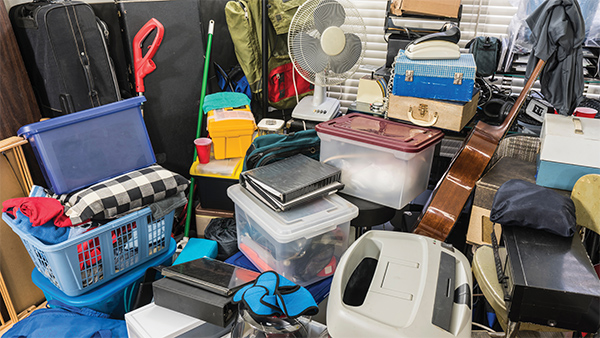Hoarding is more than a simple, nasty habit, or childlike refusal to let go. Hoarding can lead to a dangerous, unstable home. It’s also protected by the Americans with Disabilities Act as are disorders like PTSD, C-PTSD, depression, and anxiety. Compulsive hoarding is an issue of mental health, and while it can lead to many physical, structural issues to your rental property, it must be handled with care and empathy.
Anyone can suffer from compulsive hoarding. There is no grand statistic to help you pick a hoarder from any sort of crowd; children as young as thirteen can start hoarding. Because this condition is protected by the ADA, once you have a hoarding situation with a resident, you must take the long way around to deal with it.
What Is Hoarding?
A hoarder is very different from a collector. With collections, there’s often a process of what is collected, where it goes, and why it’s there. Collectors choose things with a sense of pride and accomplishment, and follow up with displaying their items on shelves, well cared for in their chosen space inside the home.
Hoarding Disorder is defined by The Diagnostic and Statistical Manual of Mental Disorders (commonly referred to as the DSM, used to help diagnose and define mental disorders) as:
- The number of items greatly compromises quality of life. Living areas and their use are impaired, social life and occupational life is not functioning.
- If there is an area clean of clutter, it is due to outward intervention from authorities, hired cleaners, or family members.
- The perceived hoarding is not because of a different medical condition, such as depression, brain injury, etc.
- Person has a need to ‘save’ items, regardless of their value and has difficulty parting with them.
How Can You Deal with Hoarding?
Patience works wonders in a hoarding situation. Because compulsive hoarding is in the DSM and protected by the ADA, you have to offer reasonable accommodations. Luckily, the main reasonable accommodation here is something that just requires a bit of empathy and time.
In 2010, Rutland Court Owners, Inc., v. Taylor, made it clear that a property manager must give reasonable accommodations to a hoarding resident.
In 2005, Douglas v. Kriegsfeld Corporation decided that the property manager had given enough reasonable accommodations (time and aid with cleaning) and could swiftly evict the resident as they pleased.
People with hoarding issues have a problem saying goodbye to things. They want to hold on to something they see as precious. You might see the danger, the smell, the structural damage, and the pest infestations, but they’re seeing treasure.
What’s the Process when Dealing with Hoarders?
As long as you’re reasonable, you’ve done your job. Reasonable accommodations are generally the way to go, for both you and your residents. You never know how many hoarders you’ll come across, or types of disability and how often. The ideal objective is giving the hoarding resident a reasonable amount of time to literally clean up their act. Document your expected time frame, and why you’re giving them these expectations. Document their lease violations as crowded doorways are a fire hazard and life-threatening in case of emergency. Mold growth and pest infestation can lead to serious (and expensive!) property damage. Be reasonable but firm.
- Have specific expectations — standards of health and hygiene for each place.
Have a timeline and give that timeline to the resident. - Consider offering cleaning services to help a resident get started — services that the resident can accept and understands will be deducted from their deposit.
- Give a method to ensure a permanent solution to the problem.
- Find out who will remove the trash/treasure.
If these steps cannot be maintained by the resident, after the reasonable amount of time, you’re on your way to an eviction. Always seek proper legal counsel if you’re considering evicting a hoarder.
What starts as a collection of stuff can turn into a serious headache for you and those around you. The “collection” could lead from clutter to a dangerous amount of filth, a smell that perforates walls, a bug or pest infestation, or even mold that you won’t be able to find until the resident is out. While they may not be showing much care to the walls around them, you do. Try to show a little care towards your resident and it can go a long way.























0 Comments